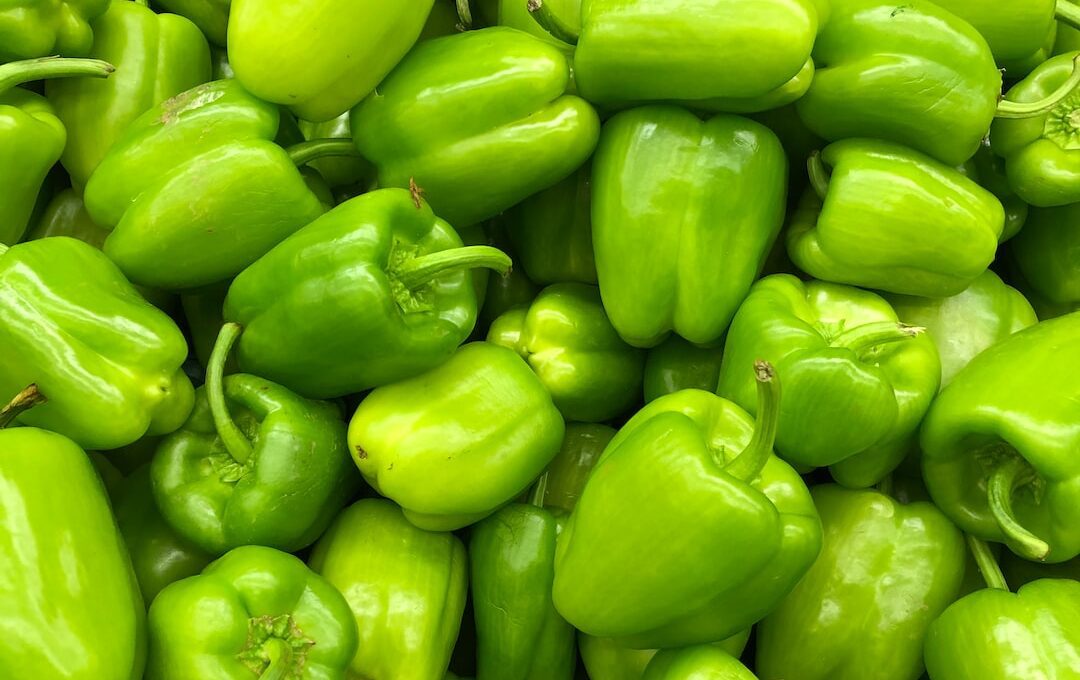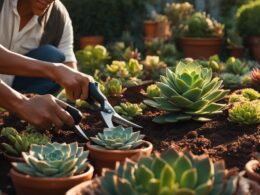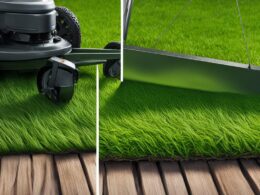Are you curious about how tall bell pepper plants can grow in your garden? Knowing the potential height of these plants is crucial for planning your garden space and providing the necessary support as they grow.
In this article, we will explore the growth cycle of bell pepper plants and the factors that influence their height. You will also learn about the average height of bell pepper plants and discover some helpful tips for maximizing their growth.
Additionally, we’ll discuss common problems that can affect the growth of these plants and provide guidance on how to support tall bell pepper plants to ensure their safety.
So, if you want to cultivate healthy and thriving bell pepper plants, keep reading to discover everything you need to know about their height and growth.
Quick Summary
- Bell pepper plants can grow to impressive heights during their growth cycle.
- They require well-draining soil with a pH level between 6.0 and 7.0.
- Bell pepper plants thrive in full sun and need at least 6-8 hours of direct sunlight daily.
- Pruning techniques and providing support for vertical growth are beneficial for bell pepper plants.
Understanding the Growth Cycle of Bell Pepper Plants
The bell pepper plants start off as tiny seedlings, but they quickly shoot up towards the sky, reaching impressive heights as they go through their growth cycle.
To ensure the safety and optimal growth of your bell pepper plants, it’s important to understand their growth cycle and implement proper care techniques.
Pruning techniques play a crucial role in the growth of bell pepper plants. Regular pruning helps maintain the desired height and shape of the plants, preventing them from becoming too tall and top-heavy. It’s recommended to prune the plants when they reach a height of around 8-12 inches. Simply remove any extra branches or shoots that are growing too close together or in an undesired direction. This will encourage the plant to grow more compactly and produce better quality peppers.
In addition to pruning, a consistent watering schedule is essential for the growth of bell pepper plants. They require regular watering, but overwatering should be avoided as it can lead to root rot and other diseases. Water the plants deeply and thoroughly, allowing the soil to dry slightly between watering sessions. It’s important to water the base of the plants rather than the leaves to prevent the development of fungal diseases.
By implementing proper pruning techniques and following a consistent watering schedule, you can ensure the safety and optimal growth of your bell pepper plants. Enjoy watching them grow tall and healthy as they go through their growth cycle.
Factors that Influence the Height of Bell Pepper Plants
Maximize the potential of your bell pepper crop by understanding the key factors that determine their impressive height. Two important factors that influence the height of bell pepper plants are pest control and watering schedule. By effectively managing these factors, you can ensure the safety and well-being of your plants.
Pest control is crucial for the healthy growth of bell pepper plants. Pests like aphids and caterpillars can cause significant damage to the plants, inhibiting their growth. Implementing proper pest control measures, such as using organic insecticides or introducing beneficial insects like ladybugs, can help protect your plants from these harmful pests.
Another vital factor to consider is the watering schedule. Bell pepper plants require consistent watering to thrive. Overwatering can lead to root rot and stunted growth, while under-watering can cause the plants to wilt and suffer. It is essential to maintain a regular watering schedule and ensure that the soil is moist but not waterlogged.
To help you better understand the importance of these factors, refer to the table below:
| Factors | Importance |
|---|---|
| Pest control | Crucial for plant health |
| Watering schedule | Essential for proper growth |
By following these guidelines and incorporating effective pest control measures and a suitable watering schedule, you can promote the healthy growth and impressive height of your bell pepper plants.
Average Height of Bell Pepper Plants
Achieving impressive heights, bell peppers reach an average height that showcases their thriving growth. To ensure your bell pepper plants reach their full potential, it’s important to provide them with optimal growing conditions.
Bell peppers prefer well-draining soil rich in organic matter, with a pH level between 6.0 and 7.0. They thrive in full sun, so make sure they receive at least 6-8 hours of direct sunlight each day. Adequate watering is crucial, as bell peppers need consistent moisture but not excessive amounts that can lead to root rot.
When it comes to promoting vertical growth, pruning techniques can be employed. Removing the lower leaves and lateral shoots helps redirect the plant’s energy towards upward growth. Additionally, gently tying the main stem to a stake or trellis can provide support and encourage vertical development.
By creating the ideal growing conditions and employing pruning techniques, you can help your bell pepper plants reach their full potential in terms of height and overall growth.
Do Roma Tomato Plants and Bell Pepper Plants Grow to the Same Height?
The height of roma tomato plants and bell pepper plants can vary. While both plants typically reach a similar height of around 2-3 feet, factors such as growing conditions, pruning techniques, and plant variety can influence their final size. Proper care and ideal growing conditions can help these plants thrive and reach their full potential in terms of height.
Tips for Maximizing the Height of Bell Pepper Plants
To ensure optimal growth, it’s essential to provide bell peppers with the ideal conditions and implement pruning techniques to encourage vertical development. Here are three tips to help you maximize the height of your bell pepper plants:
-
Pruning techniques for taller bell pepper plants: Regularly prune the lower branches and side shoots of your bell pepper plants. This will redirect the plant’s energy towards vertical growth and encourage taller stems and stronger branches. Use clean and sharp pruning shears to make clean cuts, minimizing the risk of disease transmission.
-
Using vertical gardening methods for maximizing bell pepper plant height: Consider using trellises or stakes to support your bell pepper plants. By training the plants to grow vertically, you can maximize the space available and promote upward growth. Make sure to secure the plants to the supports gently, avoiding any damage to the stems or branches.
-
Providing adequate nutrients and water: Bell pepper plants need a nutrient-rich soil and regular watering to support their growth. Ensure that the soil is well-draining and enriched with organic matter. Water the plants deeply, allowing the soil to dry out slightly between waterings. Avoid overwatering, as it can lead to root rot and stunted growth.
By following these tips and providing the right conditions, you can help your bell pepper plants reach their maximum height while ensuring their safety and well-being. Happy gardening!
Common Problems that Affect the Growth of Bell Pepper Plants
One common issue that can impede the development of bell pepper plants is the lack of proper pest control measures. It’s essential to implement effective pest control strategies to ensure the safety and growth of your plants. Pests such as aphids, spider mites, and caterpillars can cause significant damage to bell pepper plants if they’re not controlled.
To tackle this problem, start by regularly inspecting your plants for any signs of infestation. If you notice any pests, consider using organic pest control methods such as neem oil or insecticidal soap. These options are safe for both your plants and the environment.
Another important aspect of maximizing the growth of bell pepper plants is through proper pruning techniques. Pruning helps remove any dead or diseased branches, allowing the plant to focus its energy on healthy growth. Additionally, pruning can help improve air circulation and light penetration, which are crucial for the overall health and productivity of bell pepper plants.
By implementing effective pest control measures and utilizing proper pruning techniques, you can ensure the optimal growth and development of your bell pepper plants.
How to Support Tall Bell Pepper Plants
Ensure that your bell pepper plants stay upright and strong by providing sturdy support structures such as stakes or cages, allowing them to reach their full potential. By following these simple steps, you can prevent your bell pepper plants from bending or breaking under their own weight.
First, consider pruning your bell pepper plants. As they grow taller, remove any side branches or suckers that may divert energy from the main stem. This will help the plant focus its energy on growing upward and producing healthy, vibrant peppers. Be sure to use clean, sharp pruning shears to avoid damaging the plant.
Secondly, choose the right fertilizer to make a big difference in the growth and overall health of your bell pepper plants. Look for fertilizers that are high in phosphorus, as this nutrient promotes strong root development and aids in fruit production. Additionally, a fertilizer with balanced amounts of nitrogen and potassium will support healthy foliage and overall plant growth.
Remember to always follow the instructions on the fertilizer package and apply it according to the recommended schedule. Over-fertilizing can lead to burned roots and stunted growth, so it’s important to use fertilizers in moderation.
By providing proper support and nutrient-rich fertilizers, you can help your bell pepper plants grow tall and strong, ensuring a bountiful harvest of delicious peppers.
Frequently Asked Questions
How long does it take for bell pepper plants to reach their full height?
Bell pepper plants reach full height in 70-90 days. Temperature affects growth rate; plants thrive in 70-85°F. Factors that stunt growth include extreme temperatures, poor soil quality, insufficient sunlight, and overwatering.
Can bell pepper plants grow taller if they are grown in containers?
Yes, bell pepper plants can grow taller in containers. However, they may produce smaller fruit. Container-grown plants require more frequent watering to prevent dehydration. Remember to provide proper support to prevent them from falling over.
Are there any specific varieties of bell peppers that tend to grow taller than others?
For the best growing conditions for tall bell pepper plants, choose varieties like ‘Giant Marconi’ or ‘California Wonder’. Maximize plant height by providing full sun, well-drained soil, regular watering, and supporting the plants with stakes or cages.
Can pruning bell pepper plants help increase their height?
Pruning techniques can help increase the height of bell pepper plants by redirecting energy towards upward growth. Additionally, using fertilizers can provide essential nutrients for strong and healthy plant development.
How much sunlight do bell pepper plants need to reach their maximum height?
To reach their maximum height, bell pepper plants need at least 6-8 hours of direct sunlight daily. Different soil types can affect their height, but temperature extremes can stunt their growth.
Conclusion
In conclusion, if you want your bell pepper plants to grow tall and healthy, there are several factors to consider. Providing the right conditions such as sunlight, water, and nutrients is crucial.
Additionally, supporting the plants with stakes or cages can help them reach their maximum height. However, it’s important to be aware of common problems that can hinder their growth, such as pests or disease.
By following these tips and taking proper care, you can enjoy tall and thriving bell pepper plants in your garden.









